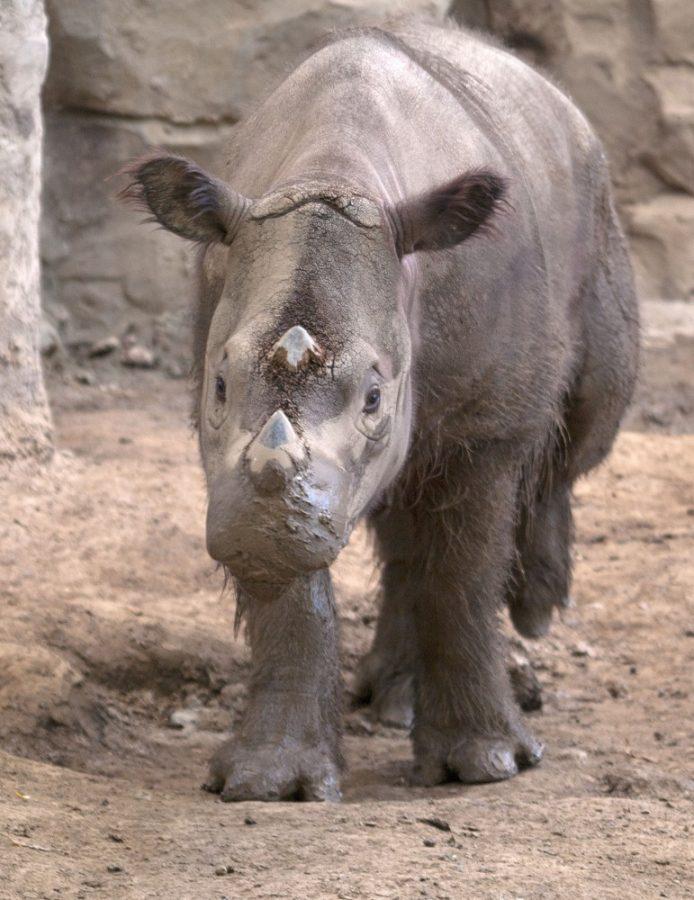Diodes made from DNA
Researchers have developed the smallest diode using DNA.
A diode is a component made of two electrodes that conduct electricity. They are used in electronic circuits to regulate circuit flow. Although diodes are usually made with semiconductors like silicon, researchers from the University of Georgia and Ben-Gurion University created a diode using a single molecule of DNA.
The DNA molecule used in the study had 11 base pairs, which is considerably short. The human genome has over 3 billion base pairs.
Researchers inserted a molecule they call coralyne into the shortened DNA strand, which increased the current for negative voltage to 15 times stronger than positive ones, thus creating a diode.
Researchers also created a theoretical model of the DNA strand to help them better understand why the experiment had the results it did.
Making silicon diodes smaller than they currently are is a problem, according to the study’s lead author, Bingqian Xu.
“For 50 years, we have been able to place more and more computing power onto … smaller chips, but we are now pushing the physical limits of silicon,” Xu said.
Since diodes this small are not able to be made with silicon, this new diode has the potential to be used in creating increasingly smaller electronic devices.
Hannibal tracked through Alps
The exact path Hannibal took to cross the Alps may have been found by researchers who analyzed 2,000-year-old horse feces.
The analysis, led by Bill Mahaney of York University in Toronto, combined microbial genetic analysis, pollen analysis and other geophysical analysis techniques that revealed a deposit of fecal matter thought to be from horses near the site of Col de la Traversette in France.
The fecal matter found at the site was dated to about 200 B.C. using carbon isotope analysis. This approximately matches the known date Hannibal crossed the Alps: 218 B.C. Researchers found that more than 70 percent of microbes found in the fecal matter are from the Clostridia groups. These bacteria can survive for thousands of years when deposited in soil.
Because the fecal matter dates from around the same time, it is being used as evidence that Hannibal traveled the Col de la Traversette route across the Alps. The site is also thought to be the place Hannibal crossed because it fits physical descriptions of the location the general passed through.
More research still needs to be done to determine for certain whether the bacteria came from horses or humans, according to Chris Allen, senior lecturer in environmental biology at Queen’s University Belfast.
Rhino’s death causes alarm
Najaq, one of the last known Sumatran rhinos, died Tuesday.
Najaq was captured in a pit trap in March and rescued in the Indonesian part of Borneo.
The rhino was around 4 or 5 years old at the time of her death.
Sumatran rhinos were previously thought to have been extinct from this part of Borneo until camera evidence spotted a scant few rhinos in 2013.
Before Najaq was found, a Sumatran rhino had not been encountered in the Indonesian part of Borneo for about 40 years.
Najaq suffered from a leg infection after she was rescued, leading to her health deteriorating and, ultimately, to her death, according to Indonesia’s environment minister, Dr. Siti Nurbaya Bakar.
It is believed the infection was caused by a wound Najaq received from an earlier poaching attempt, according to Arnold Sitompul, conservation director for WWF Indonesia.
Sumatran rhinos are poached in the wild because their horns and appendages are highly prized and are sold on the black market.
Only around 100 Sumatran rhinos are thought to still exist today.
“Our hearts are saddened by this devastating news from Kalimantan,” wrote the International Rhino Foundation on its Facebook page.
Humans wary of intimate robots
Getting up close and personal with robots may not be in your future after all. New research found that humans are uncomfortable with touching robots in so-called intimate areas.
A team of researchers are developing robots meant to serve as teachers and companions for humans in the future. Researchers chose to investigate different forms of robot-human interaction to supplement their research.
“Touch is a powerful form of communication between people that is rather understudied when it comes to robots,” said Jamy Li, social scientist at Stanford University and lead author of the study.
Li’s team experimented with a robot that can walk, recognize objects and react to commands, among other things. Researchers programmed the small, humanoid robot to verbally instruct human volunteers to touch its mechanical body in certain areas. The humans wore sensors that measured their emotional responses, such as sweating, when they followed the robot’s directions.
Li’s team found the humans experienced higher emotional responses that indicated discomfort when touching the robot’s crotch and buttocks, compared to touching other parts of the robot such as the hands or neck.
“One participant simply didn’t touch the robot at all in the intimate areas,” Li said.
The research suggests that people respond to robots in primitive ways, which could aid in developing robots to interact with people.
Follow Emily Hedges on Twitter.









